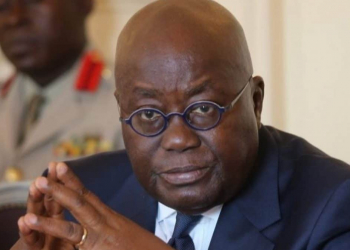The year-on-year Producer Price Index (PPI) for March 2017 increased from 5.4 percent in February to 6 percent in March.
Data from the Ghana Statistical Services (GSS) showed that the figure is 0.6 percent higher than the figure recorded in February while the monthly change rate for producer inflation was 1.4 percent in March 2017.
The Producer Price Index measures the average change over time in the prices received by domestic producers for the production of their goods and services.
Announcing the figure in Accra to the press, the acting Government Statistician, Baah Wadieh stated that activities in the mining and quarrying contributed to the marginal increase as they recorded the highest percentage increase of 20.8 percent.
According to him, the increase was also as a result of increased inflation for manufacturing sub-sectors.
“During the month of March 2017, 11 out of the 16 major groups in the manufacturing sub-sector recorded inflation rates higher that the sector average of 4.0 percent.”.
He further explained that the manufacture of electrical and machinery as well as apparatus recorded the highest inflation rate of 21.2 percent, while manufacturing of other non-metallic mineral products recorded the lowest producer price inflation rate of -2.3 percent.
The Mining and Quarrying sub-sector according to the GSS data, recorded the highest year-on-year producer price inflation rate of 20.8 percent, followed by the manufacturing subsector with 4 percent with the utilities sub-sector recording the lowest year-on-year producer inflation rate of 1.5 percent.
With respect to the monthly changes, the Mining and Quarrying recorded the highest rate of 2.5 per cent followed by the Manufacturing sub-sectors with 1.4 percent, while the Utilities sub-sector recorded the lowest rate monthly change rate of 0.1 per cent.
One year trends in Petroleum Sector
With regards to trends in the petroleum sub-sector in the last year, the year-on-year producer inflation rate was 2.9 in March 2016.
The rate increased to 6.5 percent in April 2016 but declined slightly to 6.1 percent in May 2016.
In June 2016, the rate decreased to record -4.7 percent and then to -19.3 percent in July 2016 but increased to -16.3 percent in August 2016, and further to -14.8 percent in September 2016, and -7.4 percent in October 2016.
But in November 2016, it increased to record -0.2 percent and then to -0.1 percent in December 2016. Meanwhile the rate declined to -6.9 percent in January 2017 but increased to 0.4 percent in February 2017 and then to 5.3 percent in March 2017.
Join GhanaStar.com to receive daily email alerts of breaking news in Ghana. GhanaStar.com is your source for all Ghana News. Get the latest Ghana news, breaking news, sports, politics, entertainment and more about Ghana, Africa and beyond.


